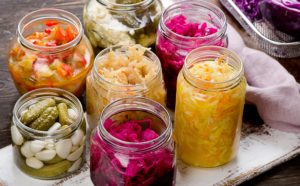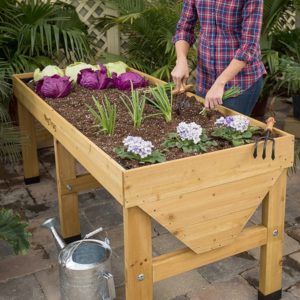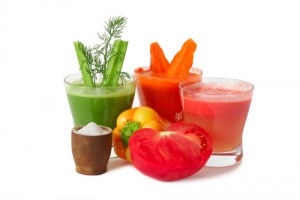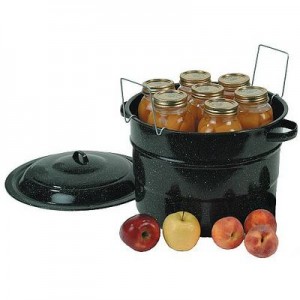It’s been a long winter and it’s so exciting to see the trees begin to bud and the flowers pop through the earth. When the girls were younger we used to put up “things to look for in spring” like birds, bugs, flowers and other signs that yes, it’s truly spring. It’s also time to begin planning for what the garden will hold, how much I need to plant to get the yield I might need for my family and friends.
 Home food preservation is a strong practice in our community and valued as a tradition in many families. The planning, planting, tending, harvesting and preserving have come to mean many hours of family time together, working and enjoying the fruits of the yield. In the 2002 edition of the Ball Blue Book, there is a wonderful chart to help guide the planning process. It details the number of plants to purchase or plant for what yield. Another chart below indicates the number of vegetables needed for a family of four, served how many times a week and then a final number of quarts that need to be preserved to achieve this goal. On the Ball web site (ballmasonjars.com) under preserving guides they have similar planning charts to help us plan in greater detail the size and scope of our spring planting.
Home food preservation is a strong practice in our community and valued as a tradition in many families. The planning, planting, tending, harvesting and preserving have come to mean many hours of family time together, working and enjoying the fruits of the yield. In the 2002 edition of the Ball Blue Book, there is a wonderful chart to help guide the planning process. It details the number of plants to purchase or plant for what yield. Another chart below indicates the number of vegetables needed for a family of four, served how many times a week and then a final number of quarts that need to be preserved to achieve this goal. On the Ball web site (ballmasonjars.com) under preserving guides they have similar planning charts to help us plan in greater detail the size and scope of our spring planting.
Here are a few guides for you from an OSU bulletin (287). These are all approximate measures:
Lima Beans (in pods) 1 bu 12-16 pts
Snap, Green Beans 1 bu 30-45 pts
Beets (w/out tops) 1 bu 35-42
Broccoli 25 # 24 pts
Cauliflower 2 heads 3 pts
Corn (in husks) 1 bu (35 #) 14-17 pts
Peas 1 bu.(30#) 12-15 pts
Summer Squash 1 bu. (40#) 32-40 pts.
Especially after our long winter, it seems we are ready to get started. I found the following, from Ohioline fact sheet HYG 1602-92.
“Many anxious gardeners work the soil in early spring when it is still too wet. The soil should not be tilled or spaded until it is sufficiently dry to crumble when worked. Experienced gardeners often use the “squeeze” test to determine if the soil is ready. With a spade, turn over a slice of soil about 6 inches deep. Pick up a handful of soil and squeeze it. If the soil remains in a tight ball when pressure is released, wait several days (without rainfall) before spading or tilling. If the soil crumbles when pressure is released, it is ready for working. Soils high in clay content are easily damaged if worked when wet.”
In our area (northeast Ohio), the last frost date is averaged about May 10th, so it’s advised that planting not occur without protection until after then. There’s still a 10% chance of frost after that date. Some crops such as radishes, lettuce, peas, beets, onions, potatoes and carrots can be sown before the frost free date.

Be careful in planning that the size of the garden doesn’t grow beyond what you have time for. Tending the plants will give the greatest yields, but also requires a fair amount of time and effort. If you don’t have space (or time) for a large garden, consider a raised garden. Some of the benefits of building a raised garden are: they can produce more than a traditional garden, don’t take the space, can be easy to protect from pests and can be raised to a height so that bending is not a problem. (For more information on raised beds see Ohio Line fact sheet HYG 1641-92.)
Planting and tending a garden is a great science and math project for children. Starting the seeds inside and transferring to the outdoors to watch them grow and produce is an opportunity to discuss everything from colors and shapes to charting outcome. It’s a great way to introduce picky eaters to new foods. If they have the opportunity to plant and eventually, pick foods to help prepare, then many times they are more likely to try new things. Remember, it may take many offerings before the child “likes” the food, so don’t give up!!
So if you are thinking of planting a garden this year or continuing with your traditions, remember that the process is not only food for your family, but many wonderful memories for their soul.
Ohio State University Extension embraces human diversity and is committed to ensuring that all research and related educational programs are available to clientele on a nondiscriminatory basis without regard to race, color, religion, sex, age, national origin, sexual orientation, gender identity or expression, disability, or veteran status. This statement is in accordance with United States Civil Rights Laws and the USDA.


































I am going to start canning THIS YEAR! we have been freezing our deer & hogs. Also all our vegatables. BUT I now am moving on to canning. I will buy a PRESSURE CANNER. The one in the catalogue looks great! who makes this? presto? I will have to gather up jars lids & every thing else(list please) . I will try the canning of our meat and veggies also. ANY spare parts or guidance will be put to good use Please send them to Georgia.. we are hungry here!
Thank You
Dan
I have always wondered about CANNING — it is well known that HIGH TEMPERATURES destroy nutrition — obviously generations of AMISH and others have survived handily on HOME CANNED FOODS — so just what are the FACTS regarding this subject ? —- and do alternative methods such as NATURAL FERMENTING ( kraut , ” last of garden” , etc ) preserve more nutrients ? and also is DRYING slices of FRUIT preferable to canning ? —- my wife and I are researching alternatives to buying a small freezer—- thanks ken